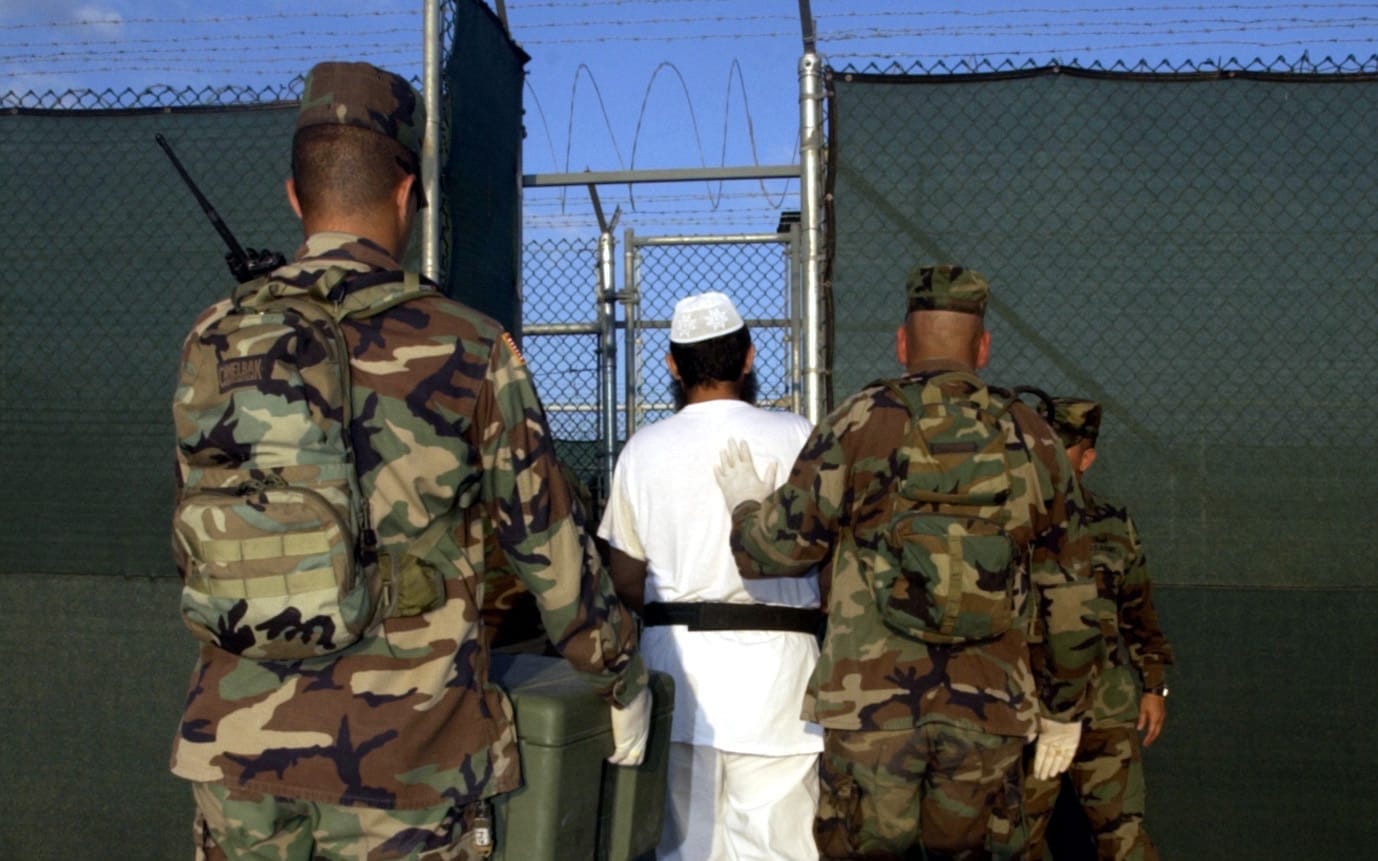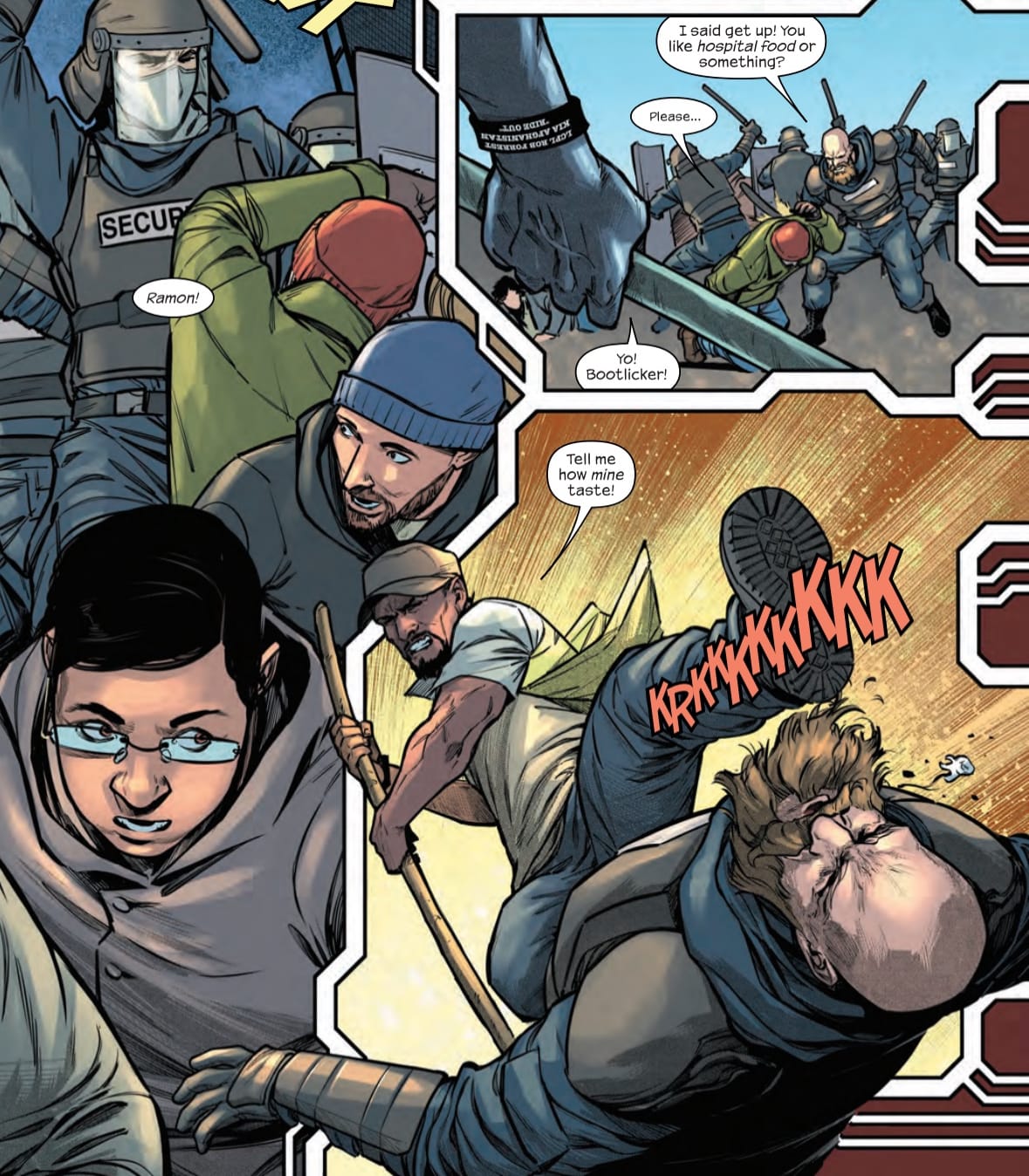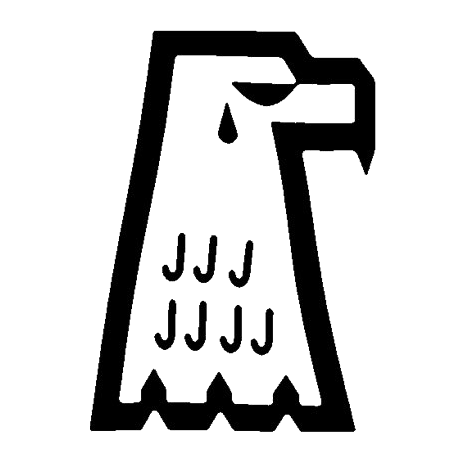CIA Interrogator Said Infamous Black Site Looked “Like A Nazi Concentration Camp"
New disclosures from the military commissions underscore the depravity of the post-9/11 program—through the eyes of its practitioners, not just its victims.

Edited by Sam Thielman
AT GUANTANAMO BAY last month, a ruling in a pre-trial hearing of the 9/11 military commission contained shocking but little-noticed descriptions from CIA interrogators about one of their most infamous off-the-books prisons of the War on Terror: the Salt Pit black site in Kabul.
The 100-plus page ruling, by U.S. Air Force Col. Matthew N. McCall on April 11, is notably free of euphemism, using the word "torture" to describe what the agency did to one of the defendants, Ammar al-Baluchi. Even more caustic were descriptions McCall included of the Salt Pit—known as Detention Site Cobalt in the 2014 Senate torture report—from CIA interrogators.
One said it looked “like a Nazi concentration camp." Other descriptions McCall cited include "a dungeon" and "something out of a horror show” with cells resembling "horse stalls." Yet another described the Salt Pit having "a stench like no other, enhanced by [the detainees'] fear." Such perspectives contrast sharply with the rough-but-professional narrative of the black sites that the CIA has presented to the public. Torture program co-architect Bruce Jessen, for instance, said the Salt Pit's "atmosphere was very good… nasty but safe."
McCall did not cite specific speakers for those quotes in his ruling. But at a military commissions hearing in January, one of al-Baluchi's attorneys, Alka Pradhan, said that the interrogator who likened the Salt Pit to a concentration camp is known by the cryptonym QY7. QY7 was among several trained by the sadistic lead Salt Pit interrogator known as NX2, who used al-Baluchi as a human guinea pig to certify subordinates in what the CIA called "enhanced interrogation techniques."
QY7 appeared in a 2008 CIA inspector general review of al-Baluchi's torture that FOREVER WARS obtained and published in 2022. In it, the interrogator recoils from much of the torture, stating that interrogations "should be done the right way." QY7 described a colleague being "too much into" inflicting pain on the caged al-Baluchi, and appeared to recognize the brutality they inflicted upon him. "Ammar most likely would consider any of the techniques interrogators used on him as 'beatings,'" QY7 told the inspector general.
QY7's concentration-camp quote does not appear in the 2008 inspector general report. Pradhan found it in a section of U.S. attorney John Durham's 2010-12 inquiry into CIA torture, and a citation for it in the footnotes of McCall's ruling contains the notation "JDM," indicating its origin with the Durham investigation. Durham famously brought no charges against agency officials despite black-site torture surpassing even the lenient restrictions approved by the Justice Department in 2002, which set the standard for impermissible treatment at pain equivalent to "organ failure." Durham's appetite for impunity in service of official crimes prefigured his decision to run interference for Donald Trump. Pradhan said that when she entered the document with QY7's concentration-camp comparison into the record of al-Baluchi's military commission, "the government entirely blacked it out."
Last week, Pradhan and her team filed McCall's ruling as a motion in al-Baluchi's concurrent lawsuit in federal court. Its extensive descriptions of what al-Baluchi experienced in CIA captivity, they hope, will aid them in their pursuit of the court authorizing what's known as a "mixed medical commission" of independent doctors to create a treatment regimen for al-Baluchi, who is in poor health due to the persistent, lingering effects of his torture.
THE OUTLINES of Al-Baluchi’s torture have emerged slowly over the years. They're gruesome, and you can see them for yourself in my 2022 piece about the CIA inspector general report. If you're unlucky enough to have watched Zero Dark Thirty, he's the reason the malnourished man they torture is named Ammar. McCall adds new detail about both al-Baluchi and those who tortured him.
At the Salt Pit, where al-Baluchi spent five months in captivity from May to September 2003, the CIA subjected him to 82 hours of sleep deprivation within his first five days there. (There are 120 hours in five days, so al-Baluchi was kept awake 68 percent of that time.) Sleep deprivation was accomplished through keeping al-Baluchi, like other detainees, standing in a painful "stress position" by suspending his bound wrists at eye level, all while he was kept naked except for a diaper. During one Salt Pit torture session, interrogators placed him in a kneeling position with a broomstick behind his knees and forced his shoulders backward. McCall writes that such a stress position is "extremely painful and could result in dislocating the detainees' knees." (That also happened to Abdul Rahim al-Nashiri.)
The timeline McCall presents indicates that the CIA packed al-Baluchi's most intense phase of torture into his first month at the black sites. By May 28, 2003, al-Baluchi was placed into "full debriefing mode," meaning he was thoroughly cooperative with his interrogators, receiving "privileges" like solid food and, well, clothing. Interrogators cited by McCall noted that al-Baluchi "lasted longer than most under the enhanced measures before he began to move toward compliance." By the time of his final torture session at the Salt Pit, an interrogator wrote with apparent approval that al-Baluchi was "developing a sense of learned helplessness," accepting the total control the CIA had over his fate. "You are my life now," al-Baluchi would later tell his captors.
One of the most horrific aspects of al-Baluchi's torture was his "water dousing," often a form of waterboarding without the board. (Majid Khan, a friend of Ammar al-Baluchi and the subject of my next book, underwent water dousing in CIA captivity as well.) The 2008 CIA inspector general report established that al-Baluchi experienced it with frigid water, and in a room kept at 65 degrees Fahrenheit. Some interrogators interviewed by the inspector general described the dousing as little more than splashes and not as harsh as waterboarding. But McCall, drawing on unreleased material from Durham's inquiry, reveals that QY7 "reported throwing up after watching a detainee being water doused," and "went to another room to avoid watching [al-Baluchi] being water doused."
Although al-Baluchi was compliant enough to enter "debriefing mode," he did not feel as if his torture was at an end. That appears to have taken CIA contractor psychologist James Mitchell, one of the architects of the torture program, by surprise. Mitchell "believed that during the debriefing phase any classical conditioning response, in this case fear, would quickly dissipate," McCall writes. That indicates how abstract torture was to Mitchell, a man who personally waterboarded detainees. Believing torture could resume at any moment is the most rational response there is to prolonged and indefinite incommunicado captivity in a torture chamber. al-Baluchi developed anxiety over what the CIA would do to him when he had no more intelligence value, later telling fellow detainee Ahmed Khalfan Ghailani that they'd be killed. Jessen, Mitchell's partner in creating the torture regimen, "believed this level of fear in a detainee, after a year and a half in the debriefing phase, was unexpected."
Here I have to pause to remind everyone that the CIA paid $81 million to psychologists who were surprised to learn torture is a life-changing experience.
In June 2003, McCall records, al-Baluchi told a psychologist that he feared the CIA would torture him "for personal business," presumably the interrogators', and despite his cooperation. By January 2006, when al-Baluchi was held in his third of five total black sites, his mental health had deteriorated to the point that he "can't effectively cope with sustained confinement," per a psychological assessment the CIA performed. He reported feeling "surrounded by the enemy, that feeling has never left him and, at times, he feels consumed by fear."
AL-BALUCHI LEFT the black sites for Guantanamo Bay in September 2006. His location and his jailers changed. His treatment didn't change as much as the move implied.
Al-Baluchi resided at Camp VII, the most secretive part of Guantanamo—that is, outside of the literal CIA black site the agency operated at Guantanamo from 2003 to 2004—throughout the camp's 2006-2021 lifespan. The outside world knows practically nothing about what it was like inside Camp VII. Neither journalists nor human-rights observers got to tour it. Lawyers for its detainees met with their clients elsewhere at Guantanamo. I'm learning a lot myself, since another of its captives was Majid.
So it's striking that McCall draws the conclusion that Camp VII bore more similarities to the black sites than it did differences. He notes that al-Baluchi's "actual detention conditions had not substantially improved and in some ways had changed for the worse." Since al-Baluchi's time in the black sites were "tantamount to solitary confinement," then continuing to hold him in "near total incommunicado status… would have reasonably reminded him of the other RDI sites he had been held in for three and a half years." (RDI, or Renditions Detentions and Interrogations, was the CIA's acronym for its torture program.) Early on in his stay at Guantanamo, al-Baluchi wails to a Camp VII psychiatrist that "he was having mood swings because he had lost privileges as the result of being rendered to GTMO."
All this is relevant for McCall. The issue before him was whether statements al-Baluchi made in January 2007 to an FBI "clean team" at Guantanamo—tasked with collecting admissible evidence for a future prosecution of al-Baluchi and others—were sufficiently non-coercive to admit them as evidence in his military tribunal. That's long been in question. In 2023, the military judge in al-Nashiri's commission prevented the prosecution from using al-Nashiri's clean-team confession on grounds that it derived from his torture.
The "clean team" conducted its interview with al-Baluchi in a cell inside Camp Echo II, the literal part at Guantanamo used by the CIA for a year as a black site, "caged with metal mesh." FBI special agents who conducted the interview said they were instructed not to give al-Baluchi any Miranda warnings against self-incrimination, and were specifically advised to tell him, in the event he asked, that he did not have the right to an attorney. "The debriefings (as opposed to interrogations) conducted by the CIA in the RDI program were similar in nature to the law enforcement interviews conducted by the FBI," McCall writes before ruling out al-Baluchi's self-incriminating 2007 statement as insufficiently attenuated from his torture. And just so it's not overlooked: Al-Baluchi told a fellow detainee at Camp VII that "detainees without useful intelligence information would be killed." That should end any remaining question over whether al-Baluchi submitted to his FBI interview of his own free will.
Unusually for a military judge, McCall repeatedly uses the word "torture" in his April ruling. Many, many others in the military commissions have adopted the CIA's euphemisms, or otherwise avoided naming what the agency did to al-Baluchi, to Ghailani, to al-Nashiri, to Majid and to at least 115 others. McCall, by contrast, bluntly writes that al-Baluchi "was tortured during his time in the RDI program. The goal of the program was to condition him through torture and other inhumane and coercive methods to become compliant during any government questioning. The program worked." (That is, the thing that "worked" about the program was its ability to produce compliance, not truth. "I said anything when I was being tortured," al-Baluchi told the CIA inspector general. Later the CIA would defend the program by pointing to the volume of intelligence reports all that Anything produced, as if it were evidence of the latter and not the former.)
By the time McCall gets to his summary assessment, he's using the T-word profligately, and even building up a moral head of steam. "It is easy to focus on the EITs [CIA's preferred euphemism for torture, or 'enhanced interrogation techniques'] because the torture of [al-Baluchi] is so absurdly far outside the norms of what is expected in U.S. custody preceding law enforcement questioning. However, the three and a half years of uncharged, incommunicado detention, and essentially solitary confinement—all while being continually questioned and conditioned—is just as egregious," he writes. "The Supreme Court found two weeks in a windowless sweatbox to be a 'shocking display of barbarism,' however that pales in comparison to what the U.S. government did to [al-Baluchi]." Colonel, do I have the book for you.
When I read McCall's ruling on Friday, I recognized such blunt language was rare, even though nearly 25 years have passed since 9/11, and more than a decade has passed since the Senate torture report. But I hadn't understood just how rare. Jay Connell, one of al-Baluchi's attorneys, sure did.
"This decision is the first judicial recognition of CIA use of torture in history," Connell noted to FOREVER WARS.
WE'RE NOT DONE talking about Guantanamo and al-Baluchi. My friend and journalistic hero Michelle Shephard, who's reported from Guantanamo more than pretty much everyone not named Carol Rosenberg, returned recently and wrote it up for The Walrus. Her piece is a wise reflection from an experienced journalist about Guantanamo's Trump-era amplification of its migrant-detention history. It's worth your time, as is every article, book and podcast Michelle produces:
This place has always been a dirty secret—and it continues to be an embodiment of American exceptionalism where the rules don’t apply and force trumps all. It’s a place where the “other” is the enemy and the enemy is held without due process. First it was Haitian refugees, then terror suspects, and now migrants. Once you create a place where the rules don’t apply, apparently, you’ll never stop finding reasons to use it.
And it so happens that she was there for one of the pre-trial hearings in al-Baluchi's commission. Pradhan gave Michelle this haunting quote about him:
Al Baluchi was questioned 1,119 times by the CIA, and by the time he was sent to Guantánamo in the fall of 2006, the six-foot-one prisoner had dropped from 141 pounds to 116. When I later ask one of his lawyers, Alka Pradhan, about the different names used in court, she says al Baluchi won’t use his birth name any longer as he believes that man died in CIA custody.
My emphasis.
NOTWITHSTANDING the U.S.-Houthi Red Sea ceasefire, Xinhua and Agence France Press report that the U.S. conducted a drone strike in Abyan Province on Friday, citing non-Houthi officials in the Yemeni port city of Aden outside of Houthi control. The officials, representatives of the non-Houthi apparatus backed by the United Arab Emirates and recognized internationally, claim that the strike targeted members of the long-since-eclipsed al-Qaeda in the Arabian Peninsula. Xinhua cites "a local tribal leader [who] confirmed two overnight drone strikes but claimed they targeted tribal elements not affiliated with the AQAP."
"A SANE STATE DOES NOT wage war against civilians, does not kill babies as a hobby, and does not set goals for itself like the expulsion of a population." That's Yair Golan, leader of Israel's left-of-center Democrats party and an IDF reserve two-star general who mobilized on October 7. His May 20 remarks were immediately controversial in Israel, prompting his cancellation from an appearance before the World Zionist Congress, and even from future reserve mobilizations. Haaretz editorialized that "It was precisely because Golan spoke the truth that the attack was so comprehensive."
Yet the withering criticism prompted Golan to walk his remarks back on Saturday. Not only does Israel "of course" not kill babies as a hobby, "Israel has not committed war crimes in Gaza," he told Channel 12 on Saturday.
The day before, an Israeli airstrike targeted the Khan Younis home of Nasser Hospital pediatrician Alaa al-Najjar, killing nine of her ten children. I just watched the outline of a girl surrounded by flames after the IDF bombed the Fahmi al-Jargawi school/shelter. On Saturday, the Associated Press, citing Palestinian ex-prisoners and Israeli soldiers, reported that the IDF's use of human shields in Gaza is "systematic," an assessment corroborated by a recent Palestinian human-rights report FOREVER WARS covered on May 14. A soldier interviewed by the AP about the human-shield usage "described a 2024 planning meeting where a brigade commander presented to the division commander a slide reading 'get a mosquito' and a suggestion they might 'just catch one off the streets.'" Calling human beings vermin is textbook genocidal language, and here its context is a military operation.
Whatever Golan's walkback, former Likud Prime Minister Ehud Olmert wrote, in an op-ed I never expected to see from an Israeli PM, that Israel is engaged in "a war of extermination: indiscriminate, unrestrained, brutal, and criminal killing of civilians." Added Haaretz's Gideon Levy on Sunday: "[S]ince then [October 7], we have committed a thousand October 7s, and these have not managed to touch the hearts of Israelis."
IT SHOULD GO WITHOUT SAYING, BUT Hasan Piker is not responsible for the slaying of two Israeli embassy employees in Washington. It's appalling that the leader of a major American Jewish institution would make this extraordinarily irresponsible accusation. But we've already seen how the ADL's Jonathan Greenblatt will make as many baseless allegations as he can to suppress Palestine supporters.
I WISH YOU A MEANINGFUL MEMORIAL DAY. Here's a piece I wrote for Memorial Day last year. But I also want to include these panels from IRON MAN #8, as our hero union organizer Ramon Vicente, a Marine veteran of Afghanistan, wears a wristband memorial for his fallen friend, a fictionalized version of the man known as Sergeant Rob in REIGN OF TERROR (sorry I made you a Marine in the comics, you would have laughed at that), while he protects his brothers and sisters on the picket line.

Art by Julius Ohta and Alex Sinclair, letters by VC's Joe Caramagna, words by me. Grill something today and commit to ending the wars we have and stopping the wars of tomorrow.
WALLER VS. WILDSTORM, the superhero spy thriller I co-wrote with my friend Evan Narcisse and which the masterful Jesús Merino illustrated, is available for purchase in a hardcover edition! If you don't have single issues of WVW and you want a four-issue set signed by me, they're going fast at Bulletproof Comics! Bulletproof is also selling signed copies of my IRON MAN run with Julius Ohta, so if you want those, buy them from Flatbush's finest!
No one is prouder of WVW than her older sibling, REIGN OF TERROR: HOW THE 9/11 ERA DESTABILIZED AMERICA AND PRODUCED TRUMP, which is available now in hardcover, softcover, audiobook and Kindle edition. And on the way is a new addition to the family: THE TORTURE AND DELIVERANCE OF MAJID KHAN.

